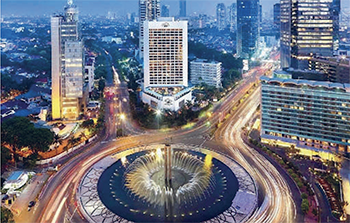Jakarta, IO – In August 1945, Mao Tse Tung (Mao Zedong) and Zhou Enlai flew from Yan’an to China’s wartime capital, Chongqing, to discuss the relationship between the Chinese Communist Party (CCP) and the KMT Party (Kuomintang) after the Sino-Japan War finished. Accompanied by the US ambassador, Patrick J. Hurley, Mao joined Chiang Kai Shek for dinner on August 27 (10 days after the proclamation of Independence of Indonesia), which was the first meeting between the two Chinese political leaders.
After seven weeks of negotiations, the two sides succeeded in agreeing on a common goal of establishing political democracy in China and placing all of China’s armed forces under Chiang Kai Shek’s command. However, throughout the negotiations, armed contact between the two sides did not stop, in fact it escalated as the CCP troops continued to be attacked on both sides, north and south of the Yangtze river.
Mao finally returned to Yan’an on October 11, 1945, followed by a joint statement issued by the CCP and KMT after that, which is now known as the “Double Tenth Agreement.” In the agreement, the CCP and KMT recognized each other. The two sides planned to form a coalition government. Although the purpose of the collective agreement is actually only to avoid the continuation of the civil war. Unfortunately, the nationalist government under Chiang Kai Shek refused to recognize areas that had been controlled by the CCP. Over time, Chiang began to be unsure of the merits of the joint statement. According to him, a military solution is the best option. Vice versa. Mao described the joint statement as “a mere scrap of paper.” Mao later told Stalin that civil war was “nearly inevitable.” And by the end of October 1945, it was becoming increasingly clear that the treaty would be short-lived, and that a full-scale civil war would soon resume in 1946.
Read: China’s Silk Road, From the Physical to Digital
The failure of the agreement between the CCP and the KMT in late October and early November 1945 made US aware that the communist empire represented by the Stalin regime was no longer an ally like when it defeated Hitler in Europe. Stalin began to spread influence to new countries that US also wanted to control. Throughout the negotiations, it was clear that Stalin was behind Mao, and vice versa, US was behind Chiang, so the deadlock in negotiations would lead to civil war.
US’s belief that the communists would act in the same way in other new countries that in fact wanted to be free from the colonial powers shrunk Uncle Sam’s enthusiasm in supporting the full independence process in new countries, including Indonesia. By November 1945, when it became clear that the communists were on the opposite side of the interests of the allies, US reduced its pressure on the Dutch in Indonesia. US was even very impressed to support the Dutch plan to carry out military aggression to reclaim Indonesia, after Japan declared unconditional surrender and after Soekarno-Hatta proclaimed Indonesia’s independence. US did not budge when Britain carried out a brutal attack in Surabaya on November 10, 1945.

